Impermanence

All things are impermanent. Fluidities of the liquidities of akasha through whcih we view and interface with the human plane. In this context, human civilizations, or other things which have the seeming of more enduring substance, are revealed to be frozen bubbles, lasting a minutia longer than their floating counterpart in the endless movement of time and space. Yet while they are impermanent, there are also beautiful. Perfect in the progression of their point-of-view and it’s locus point within the Akasha. In our sublime appreciation of this transient Character and it’s experience in the incarnate plane, we witness the crystallization of form from the formless, the essence of Spirit passing through the material of the incarnate plane … In this context, the shape of our soul “descending” from Heaven to Earth parallels the unique configuration of a raindrop which, constructed of it’s own unique configuration of elements, forms the liquid bubble of our substance, rippling out into the surface of the Earth like rain falling on Water. As we come to the realization that we are awareness itself looking through this bubble of impermanent form, our inquiry of embodiment leads to the structure of that bubble and how it defines our point-of-view and sacred journey through the incarnate plane.
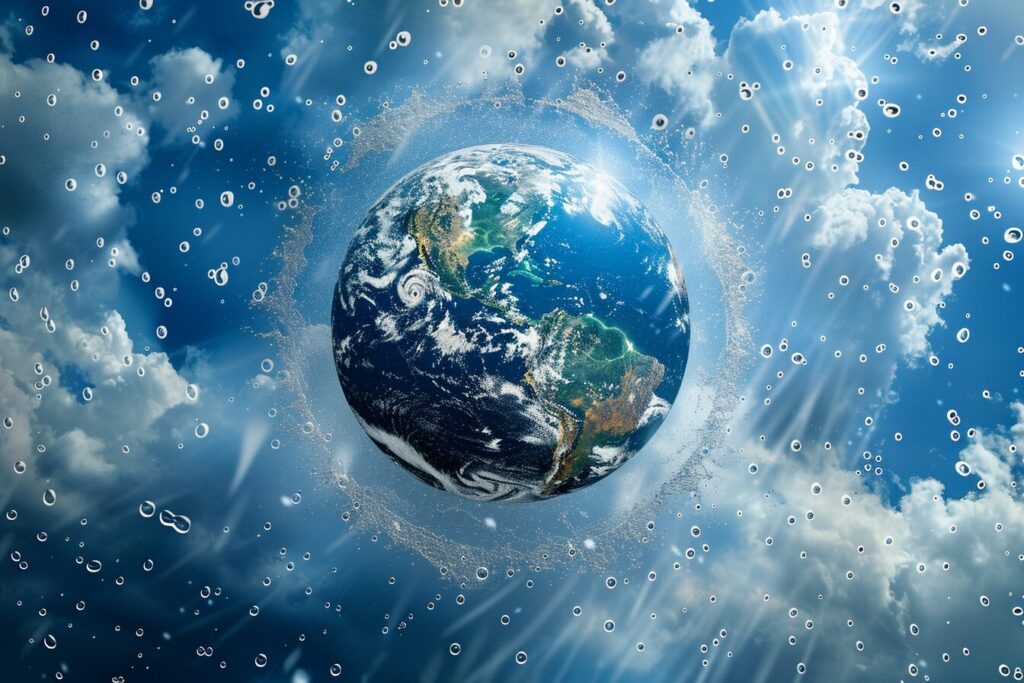
The easiest way to describe this, in Nature, is to use the idea of Water. As a substance, Water takes many forms. It can be a liquid, a solid, and a gas, all aspects of rigidity and dissolution. Such is also the nature of our substance of self, seen in it’s progression from formlessness to impermanent form and back again, like Water falling from Heaven to Earth and back again.
Levels of Impermanence
The conversation on nature of the world is defined on a macro-level by the degree of impermanence in which a phenomenon occurs. In this context, what we encounter in the fleeting spark of a mortal life is far, far less enduring than the karmic impressions which carry over from body to body and which contain the constellations of aka that define our time and talent.
Understanding this is key, for it relates to the discussion of time, space and dimension that lay at the core of the manifestation of one’s personal reality along their axis mundi.
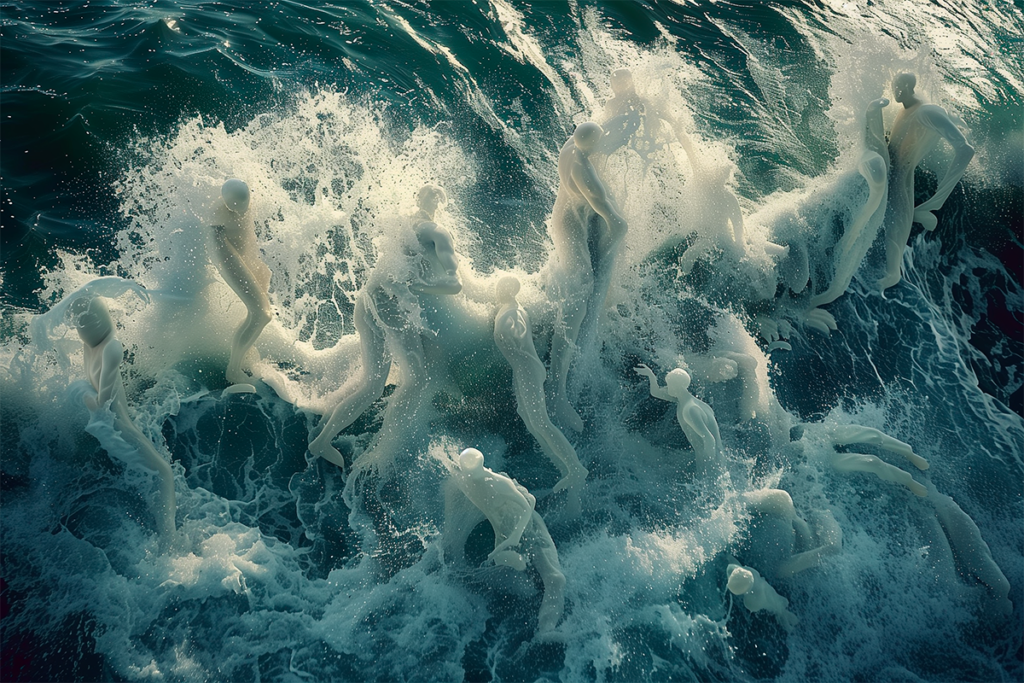
The way I feel it is thus – Consider the ocean. At the very top of the ocean lay the spume, the little droplets of white seaspray which form the crest of the wave. They are the most easily seen yet the most fleeting, existing as an extension of the wave which is itself an extension of the currents of the ocean herself. In terms of degrees of impermanence this is the most impermanent, the most fleeting of things. In the context of the yoga of the akasha, this is the flickering of our current ego within the minute perspective of a single lifetime.
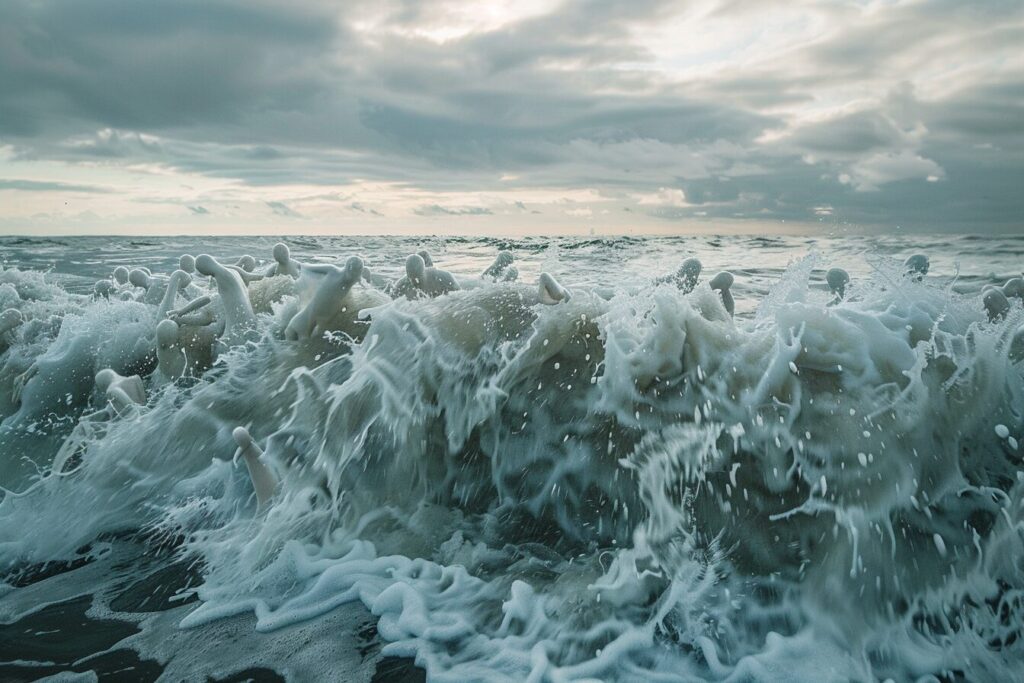
Consider the image. It takes sublety to perceive the figures and their relationship to the ocean. Such is the nature of our awareness of self and that which defines the journey of “know thy self”.

In such context, entire civilizations and cultures which are themselves made of individual egos in the spume of the etheric ocean are similarly impermanent. While they last longer than the droplets of divinity that make up their substance, they too are destined to fade, returning to the formlessness from whence they came.
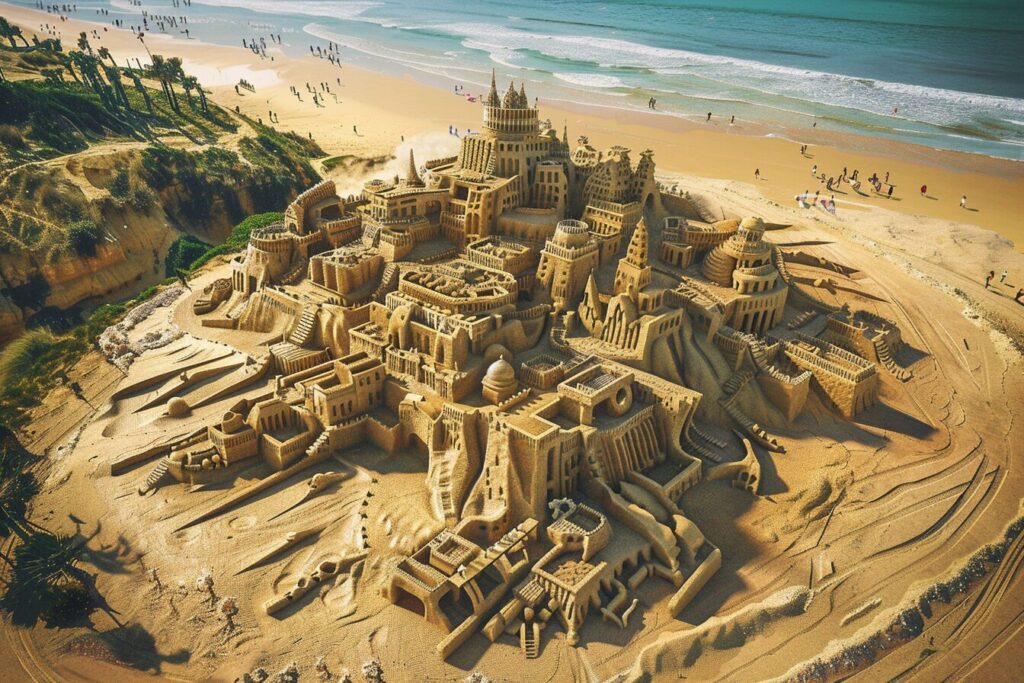
Following this idea of formlessness into form in terms of the land, let us look at the idea of castles in the sand. At shapes formed from the more rigid yet still highly malleable sandstuff at the edges of the shore where the land meets the water.
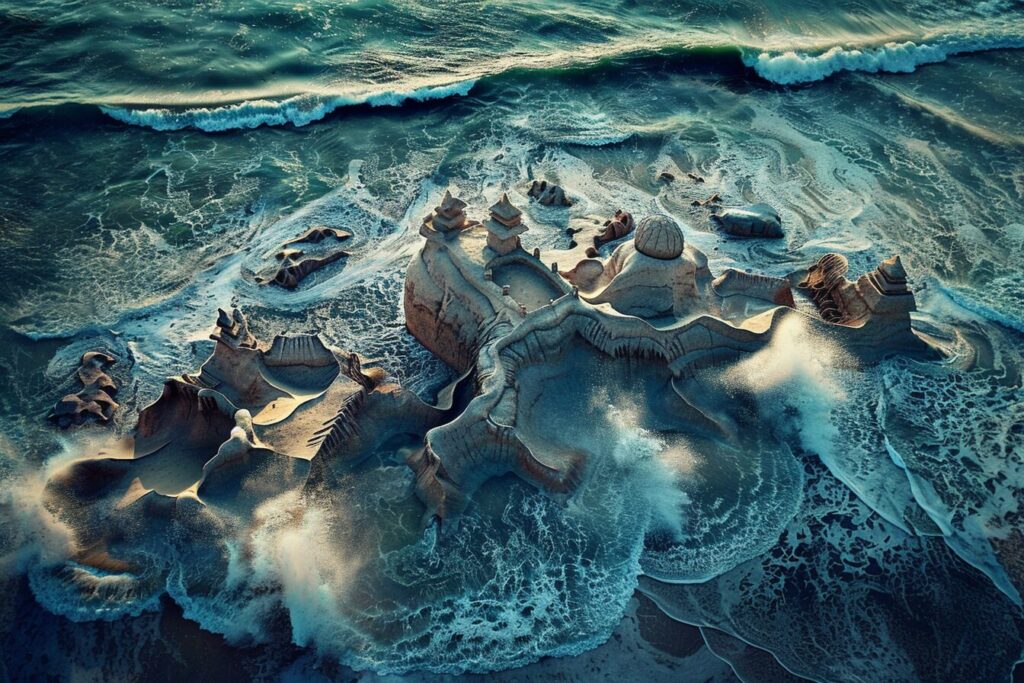
There is grace in this, for such are the beautiful sculptures of our consciousness, the manifestation of the divine intelligence that lay within us formed into form. Such is our history, the play of our many culture, traditions and civilizations and the individuals who forge their destiny along the way. Yet for all such majesty these too are impermanent things, destined to be washed away by the tides of time, defined by the changing Ages of the Akasha in which they exist.

Such is the fate of all forms made from the sands of time that is the clay of our consciousness made manifest, and it is in this sense of change, of how long things last within our self that we apply the practice of self-transformation to consciously make that change happen.
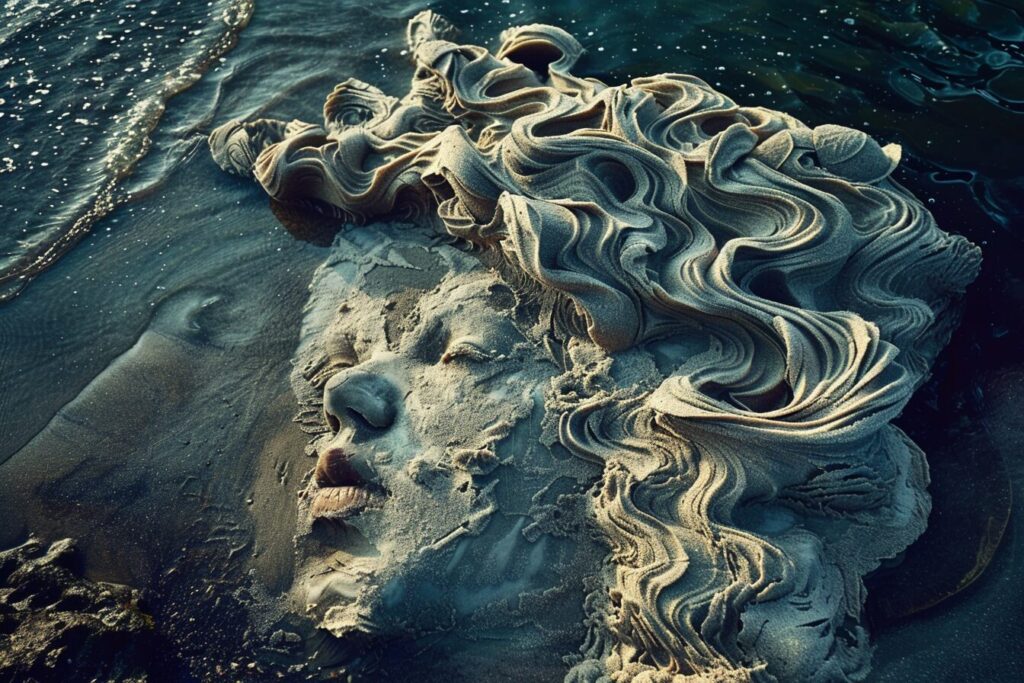
Can we be the sculptor of the clay of our consciousness? To do so, we must understand the degrees of impermanence that define the qualities of our self and where they exist within that sculpture of self.

As artists of self-transformation we act as sculptors, intentionally changing the clay of our consciousness. Like any form of art we learn to work with our medium which in this case is consciousness itself.
All throughout human history we have used metaphors from the natural World to conceive of and describe the various states of consciousness. As we are born of nature, made from the substance of Gaia, it is the clear reflection of nature and the deva that make up her substance that we find the reflection of who we are and who we can be. In this way, we use Water as a primary metaphor to describe the substance of the self which produces the mind and it’s perceptions, for we are made of more than 70% of this primal element, and are defined by the qualities of it’s nature within us. This is deeply seen in the classic texts on spirituality and the nature of mind’s perceptions, where the ideal of a still and clarified consciousness is seen as either one’s clear reflection in still Water or, more often, the ability to see the substance of what lay beneath the Water in it’s stillness. When our mind is not rippling, says the ancient metaphor, we may see clearly that Which Is. While many are familiar with this classic metaphor of still or rippling water, in the Mythica we take this a step further, using the same principle to illuminate the structure of form itself and the impressions which ripple out into the substance of the Akasha. As part of expressing the vibrational World as she occurs on the surface of perception in the context of our journey to the embodiment of a new paradigm of Grace and Abundance, we describe the physics of the quest, the vibrational laws that govern our manifestations and their relevance in the cycle of birth, death and rebirth that defines the endless cycle of becoming in the World of forms.

